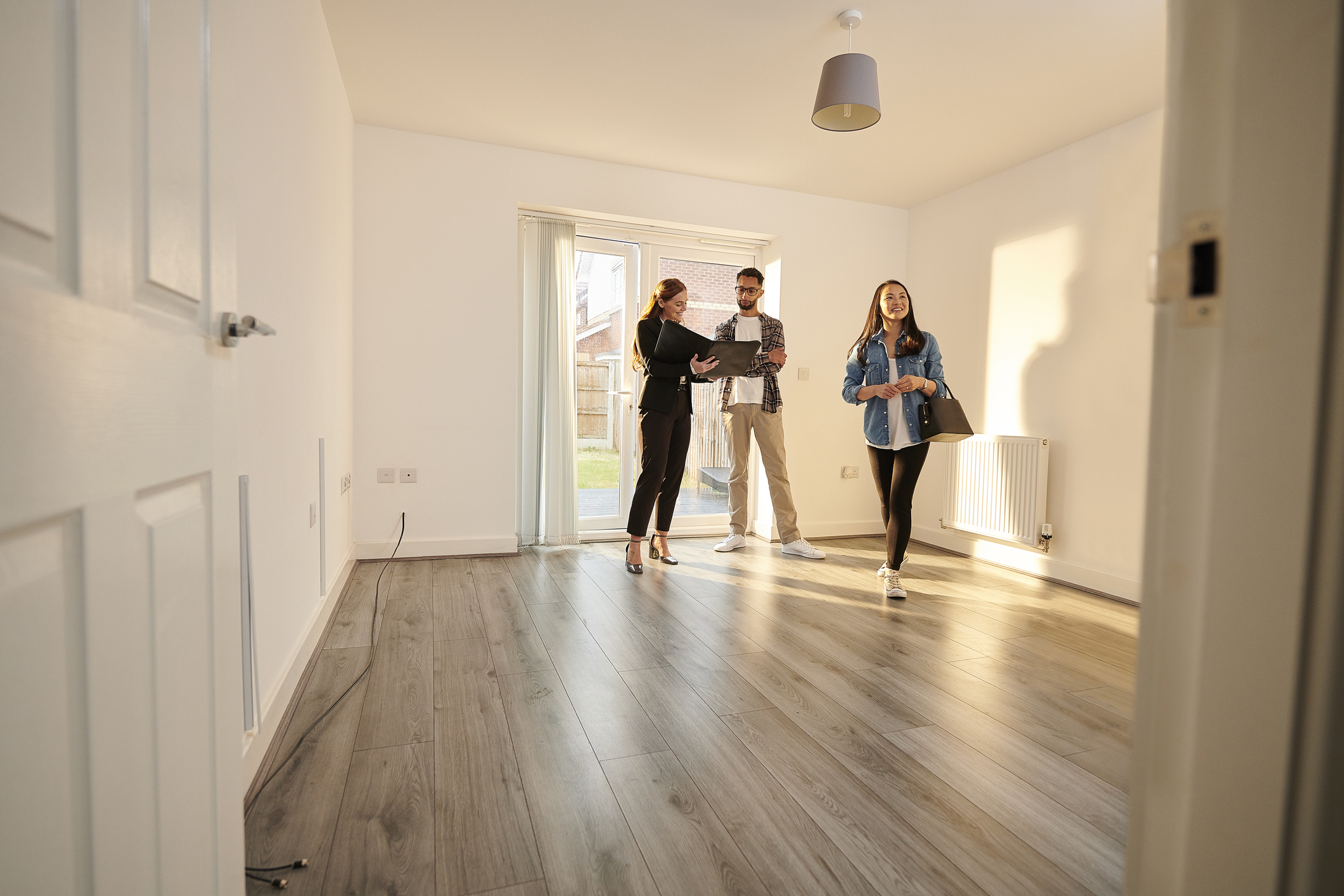If you’re in the market to buy a new home, scouting for the perfect location can feel like an uphill battle. But while it can be especially challenging, finding a suitable neighborhood to call home is a crucial step in the home-buying process. The location you choose can significantly impact your quality of life, affecting everything from convenience to future property value.
Whether you prioritize safety, close proximity to freeways, or a diverse community, this guide can help make navigating the process a little easier. To learn how to find the right neighborhood for you, here are seven tips for scouting the perfect location.

1. Research neighborhoods.
Before you go looking for your dream home, you’ll need to do a lot of research on different neighborhoods to determine which ones align with your needs. When researching, consider factors like safety, school districts, proximity to work, public transportation, and local attractions — i.e. parks, restaurants, and shopping centers.
You can learn about different neighborhoods through real estate websites, neighborhood guides, and other online resources, which can help provide valuable insights so you don’t have to go into the house-hunting process blindly.
2. Define your needs and preferences.
Now that you know which areas you like, try clarifying your needs in order to narrow down your search criteria. To do this, make a list of the features that you absolutely can’t live without. This can be anything from the number of bedrooms and bathrooms to architectural style, or whatever special conveniences you desire.
Remember, your needs can also include preferences, so when shopping for your dream home, consider your lifestyle preferences, such as a suburban, urban, or rural setting, and whether you prefer a close-knit community or more privacy.
3. Assess commute and accessibility.
To make sure you can easily move around your new neighborhood, evaluate commute times and transportation options. That way, you don’t disrupt your daily routine, making the transition to a new home much more comfortable.
Remember to account for factors such as proximity to major highways, public transportation routes, and access to essential services like grocery stores, health care facilities, and recreational activities. Balancing convenience with your desired lifestyle is key to selecting a location that meets your needs.

4. Explore natural surroundings.
For many people, being in close proximity to nature or natural surroundings — i.e. parks, lakes, or mountains — is a huge plus. And who can blame them? Living near nature is known to boost your mood and your overall well-being for a happier, healthier life.
If you enjoy being out in nature, be sure to scout for any outdoor recreational opportunities in the area by making a list of hiking trails, bike paths, or waterfront access.
5. Consult with local experts.
House-hunting isn’t always easy, and fortunately, you don’t have to go at it alone. Local real estate agents, property managers, and community representatives have a lot of insider knowledge of potential locations. And because of this, they can help advise you on market trends, neighborhood dynamics, and hidden gems that you may not be able to access on your own. To maximize your chances are securing the perfect location for your dream home, consult with a local expert who can help you make an informed decision on your investment.

6. Visit potential locations.
After you’ve narrowed down a few potential options, you’ll need to visit them firsthand to help you pick the best one. Take time to explore the neighborhood and surrounding area to see how you like it.
When visiting, remember to pay attention to factors that’ll affect your daily life such as noise levels, traffic patterns, or air quality. This can help you envision yourself in the area and determine whether the location aligns with your lifestyle.
7. Evaluate affordability and value.
When scouting for the perfect location, it’s always a good idea to take into account the affordability and potential resale value of the homes in the area. You can look up things like recent sales data, property taxes, property appreciation rates, and homeowner association fees to gain a better understanding of how much your investment will be worth in the future.
If you want to live in an area with good resale value, there’s one thing to keep in mind: location, location, location. Location is super important when it comes to property values, so you’d be wise to pick an attractive and up-and-coming neighborhood in order to increase your home’s value over time.
popular posts
- 1It’s Black Business Month, So Let’s Go Shopping and #BuyBlack!
- 2These Home Decor Items Will Instantly Make Your Space Look Outdated
- 3Black-Owned Home Decor Stores To Support Across the United States
- 4A Look Inside Elon Musk's Tiny $50,000 House
- 57 Black and Multicultural Designers To Follow For Design Inspo
Spaces
Whether it’s luxury or ease, every area of your home should be as fabulous and unique as you.
How To Manage Indoor Humidity for Maximum Home Comfort
by Brittni Williams | June 22, 2023
Hunker Down: 5 Emergency Goods To Stock Up on in Times of Crisis
by Brittni Williams | June 12, 2023
FOLLOW ALONG ON INSTAGRAM
#homeandtexture
Find us on social for more home inspiration where culture, personal style, and sophisticated shopping intersect to help you create a home where you love to live.








